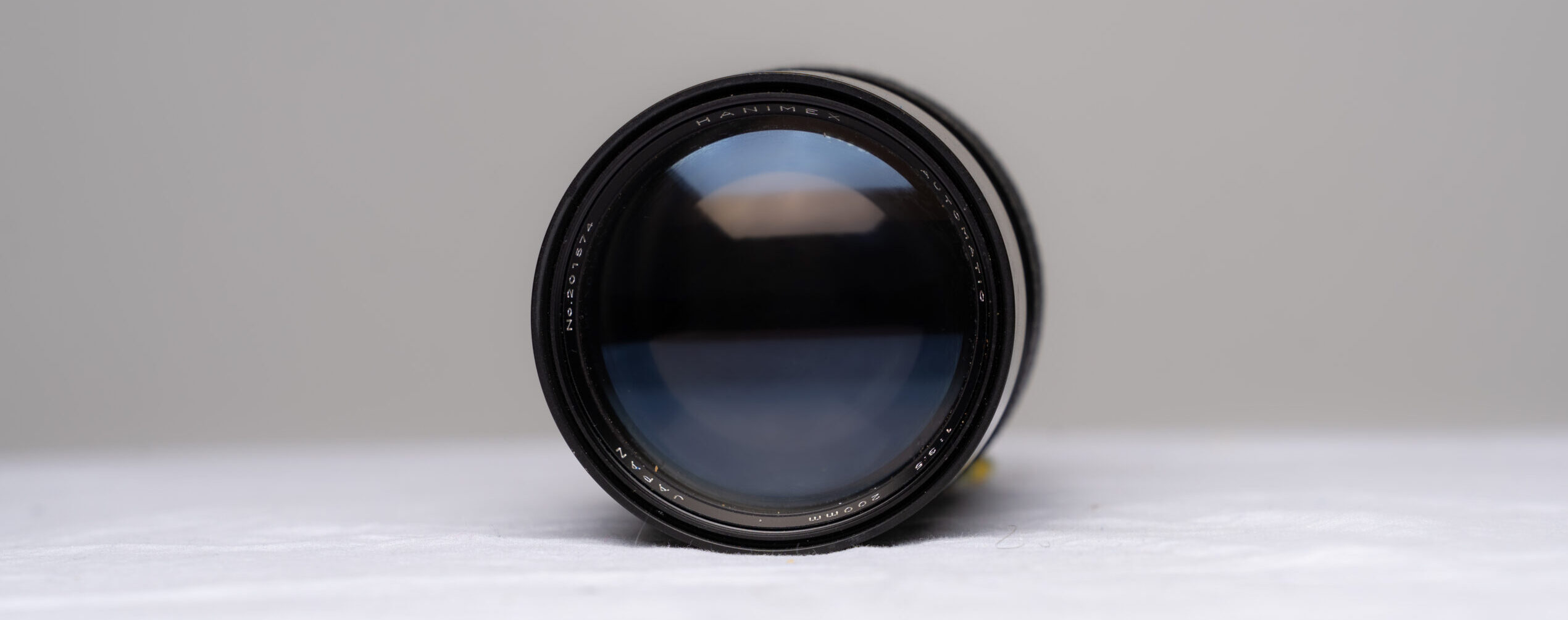Hanimex, an importer of photographic equipment into Australia and New Zealand, was founded in 1947 by Jack Hannes (not to be confused with Jack Hanna). The name was an abbreviation for Hannes Import Export, and according to their promotional material, the lenses were imported from Japan.
Technological progress in lens manufacture in Japan has been so dramatic that from the factories of Japan’s largest manufacturer of precision-build accessory lenses, Hanimex is able to present a remarkable range of lenses for all brands of single lens reflex 35 mm cameras, at unusually attractive prices.
Japan’s optical “know-how” has effected many economies in the production of top-grade lenses. The use of computers in optical design and automated machinery in manufacture means that the buyer of Hanimex lenses is acquiring a product which might easily have been beyond his means not so very long ago.
— A Guide to Hanimex Lenses
The company changed hands several times, having at one time being owned by Ricoh for a while and most recently being owned by Fuji, although they no longer use the Hanimex name.
Physical Characteristics
This lens has an M42 screw mount. I used a Neewer M42 to E-mount adaptor (about $12 on Amazon) to mount it to my Sony A7II. An important feature to look for in an M42 adaptor is a set screw to allow you adjust the “up” position when fully screwed in. I have another adaptor which works well for some lenses, but for others, when you screw the lens all the way in, the settings are all on the bottom.
The aperture goes from f3.5 to f22 in half-stop increments except from 3.5 to 4 which is technically a third of a step, and 16 to 22 which in a full step in a single click. There is a switch at the bottom (next to the mounting bracket) labeled A and M. With this switch set to M, the aperture behaves normally. With it set to A, the aperture is wide open unless a pin on the mounting ring is depressed. This would allow a camera to open the aperture for focusing and then close it to the set f-stop before opening the shutter. Most of the M42 adaptors I’ve seen just always depress the pin, so the switch does nothing. Also, on the copy that I have, the aperture sticks a bit around f11 to f22 and won’t close all the way down.
The focus ring is smooth and has a throw of about 3/4 of a turn. The minimum listed focus distance is 2.7 meters which is a bit under 9 feet. The grip for the focus ring is a sticker of some sort that has the look and texture of leather. This is in good shape on the copy I have, but I can imagine that on a well-used lens this might be easily damaged.
The other end of the lens has a built-in lens hood. Although on the copy I have, there is a dent on the hood which prevents it from extending more than about a centimeter. The front of the lens also has threads for a 62mm filter.
The lens measures about 5 3/4″ (145mm) long and weighs 23.1oz (655g)
Focus Performance
This is a manual focus lens, so it takes practice focus well. However, with a focus ring that goes about 270 degrees, it’s easier to tune than some lenses that only have about a quarter of a turn on the focus ring.
Here’s the focus chart I used. This being a 200mm lens I couldn’t get the whole chart in the frame without punching a hole in my wall. In the future, I may mount the chart somewhere in a larger room so I can get further away. Even at f3.5, it seems pretty sharp until you zoom in.
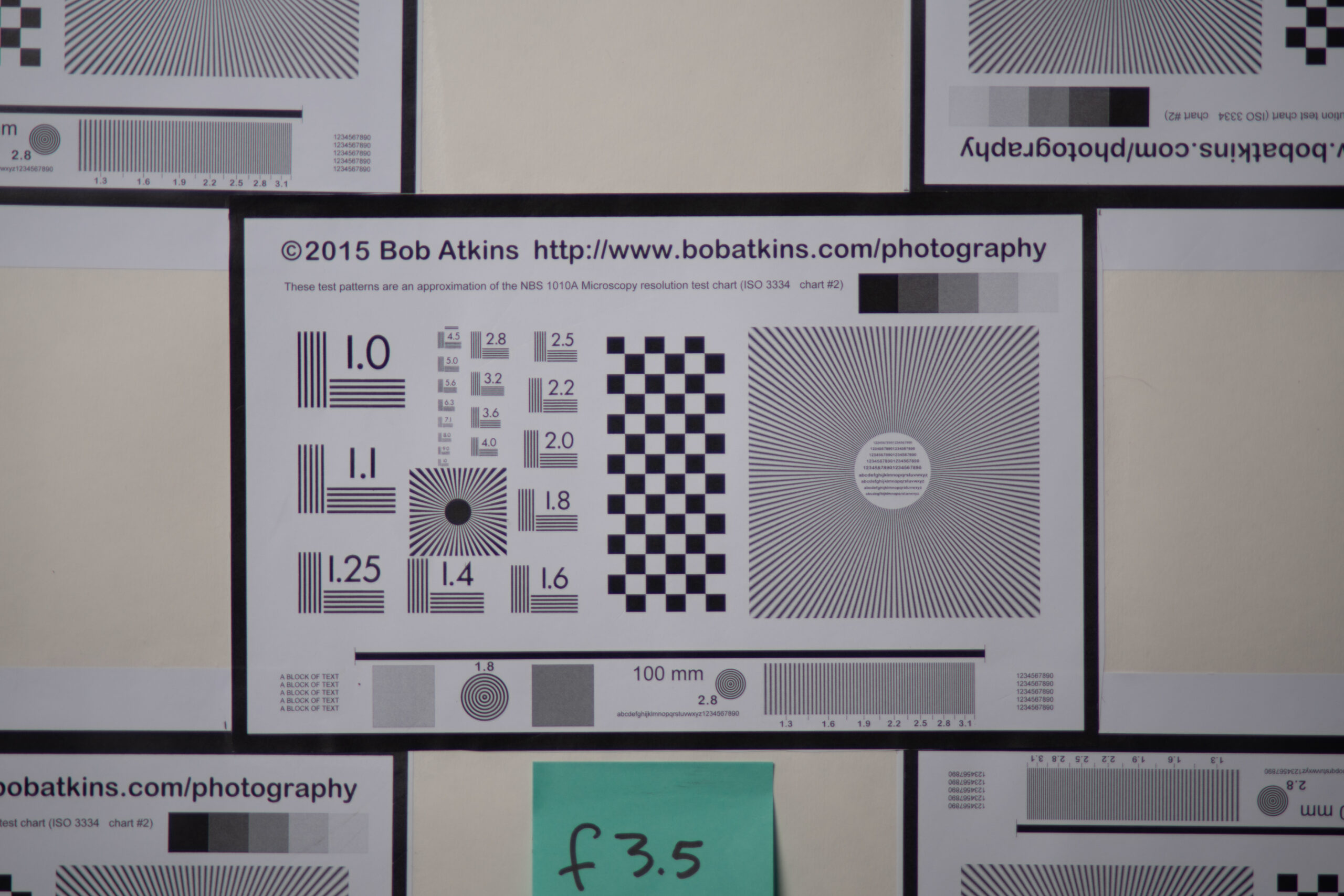
Here’s a 200% zoom into the center of the chart. At f3.6, the focus isn’t real sharp, but it’s hard to tell if that’s because of the lens or because I didn’t get it focused very well.
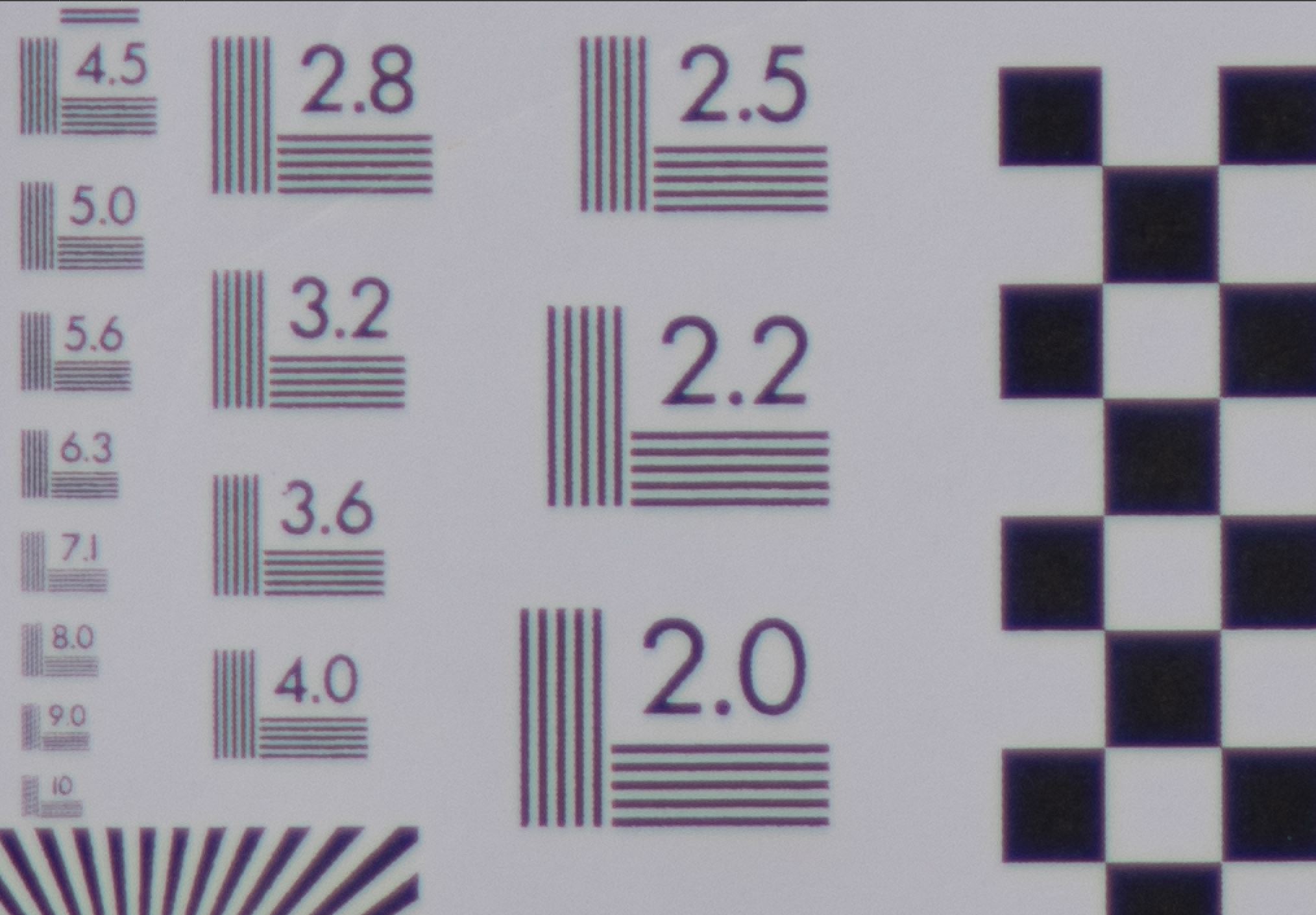
At f8, things are much sharper.
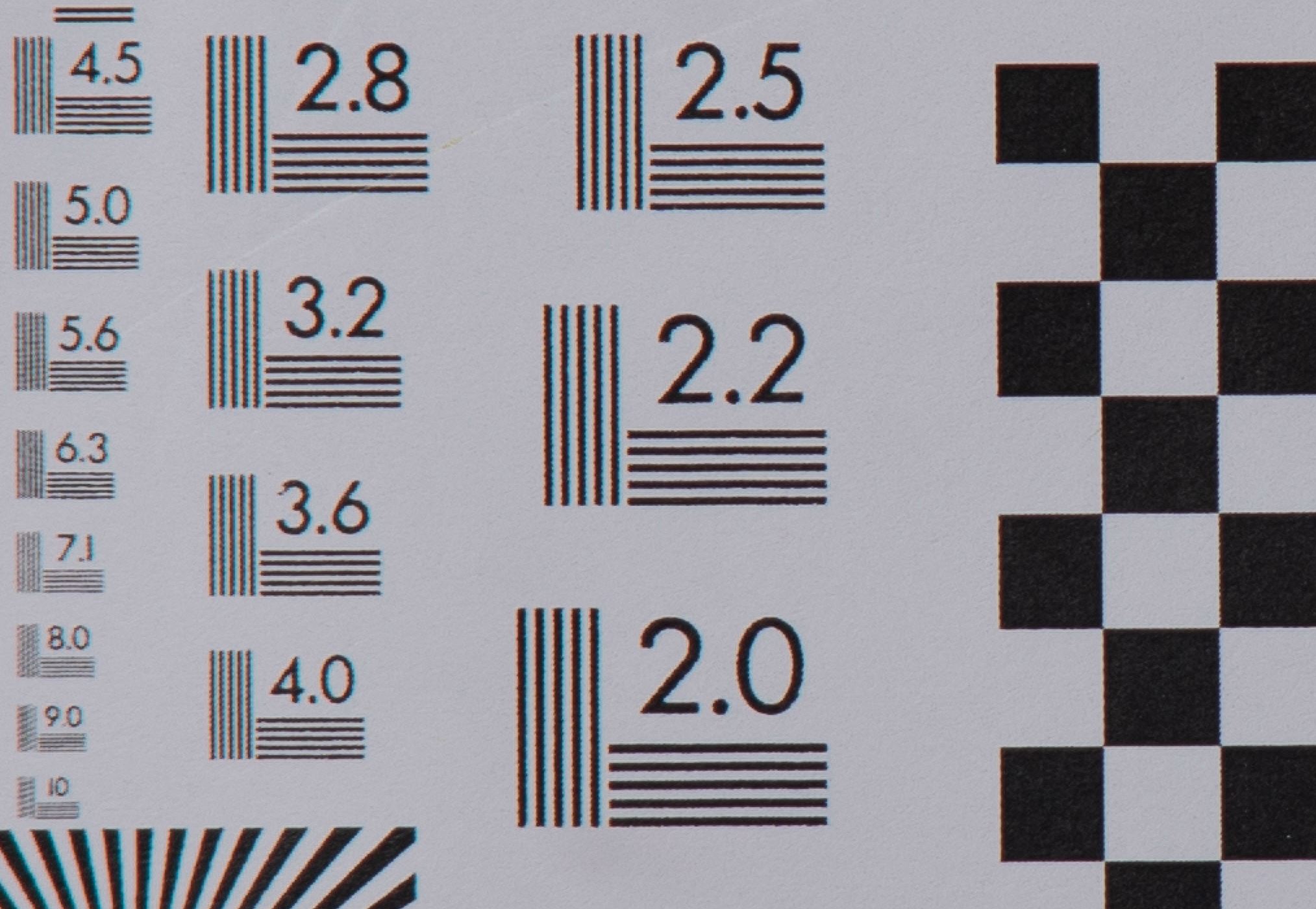
At f16, focus is so sharp, you can start to see the halftone of the printer. There does appear to be a bit of chromatic aberration, but not much. You also notice that at f16 it’s also a lot brighter than the other two. This is because the aperture sticks so this is probably closer to f11 but the flash power was set for f16.
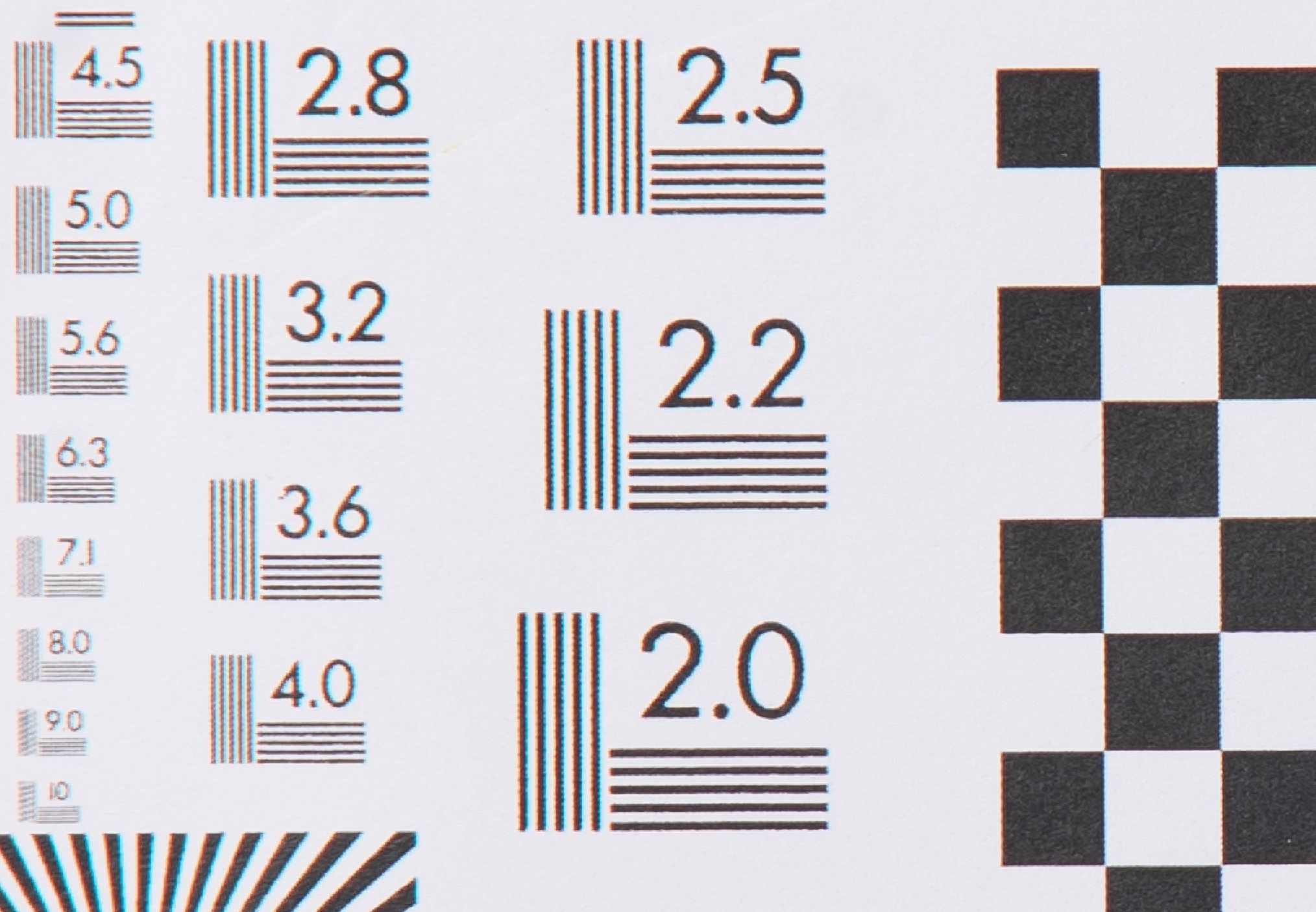
Here are the focus charts for the upper left corner at 200% zoom. At f3.5, the image is a bit softer in the corners and chromatic aberration is more noticable.
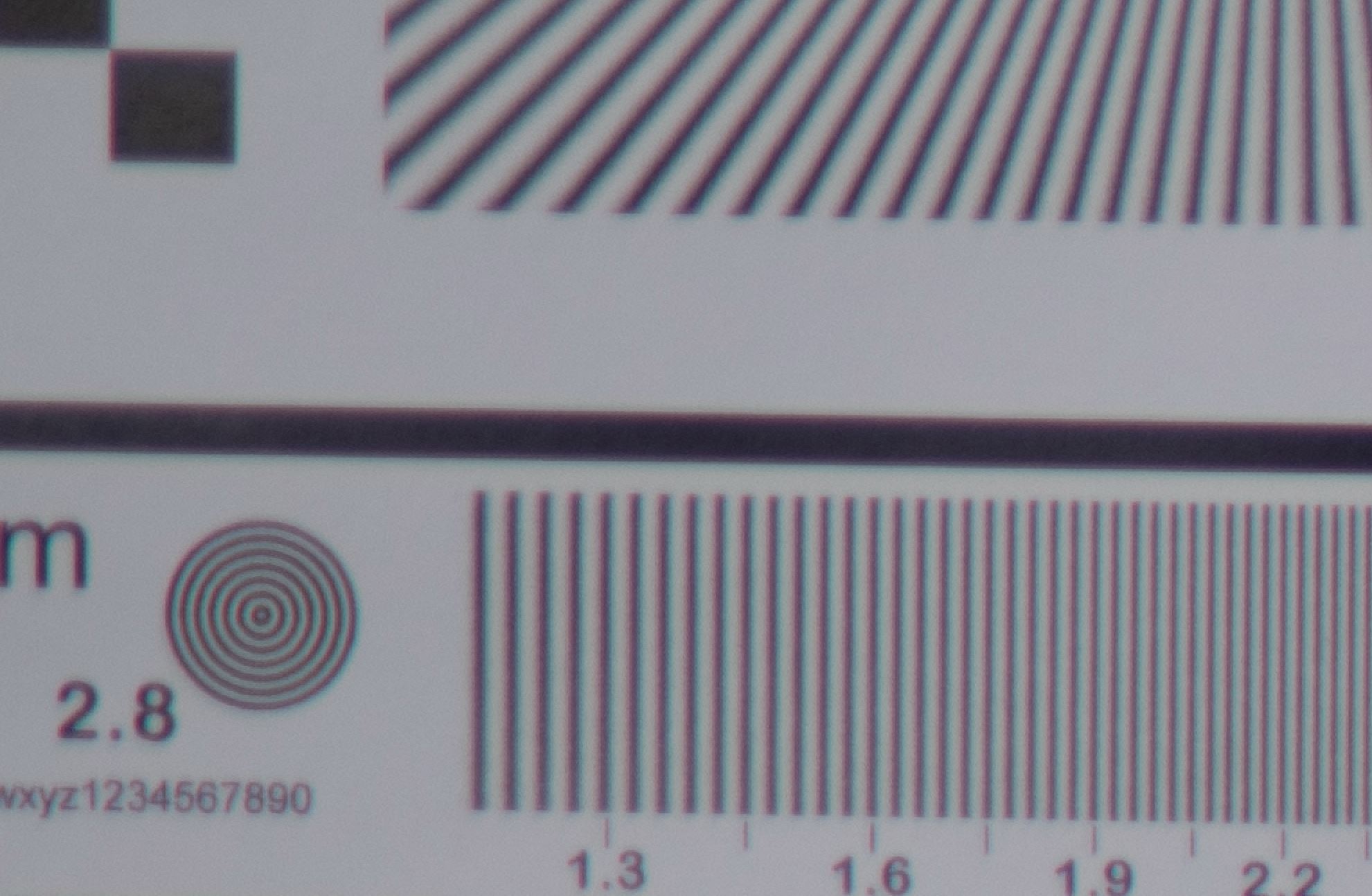
At f8, the corners are a bit sharper, but not as good as at the center, and chromatic aberration is even more noticeable.
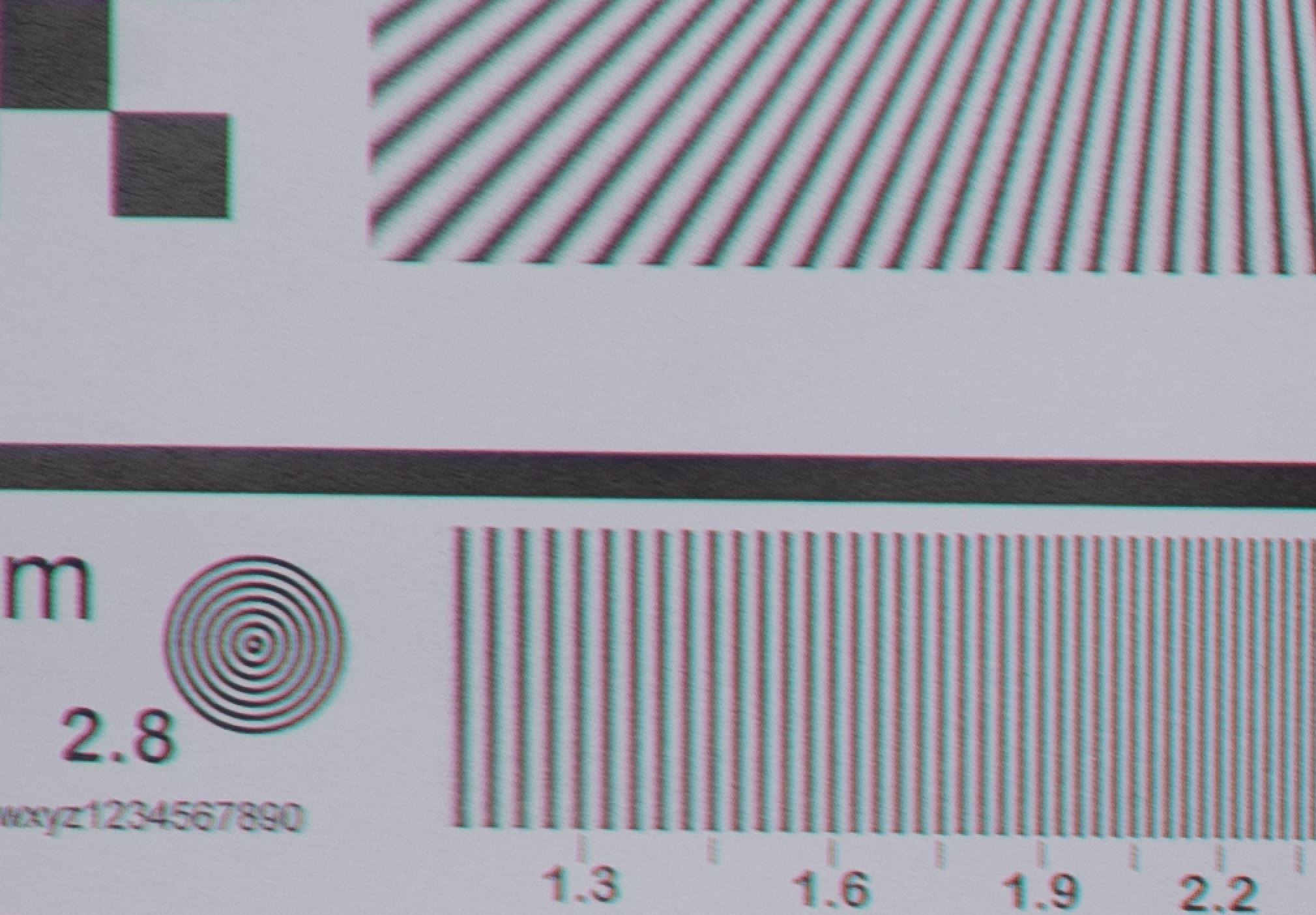
At f16 the chromatic aberration is so bad it’s hard to tell if the edges are sharp.
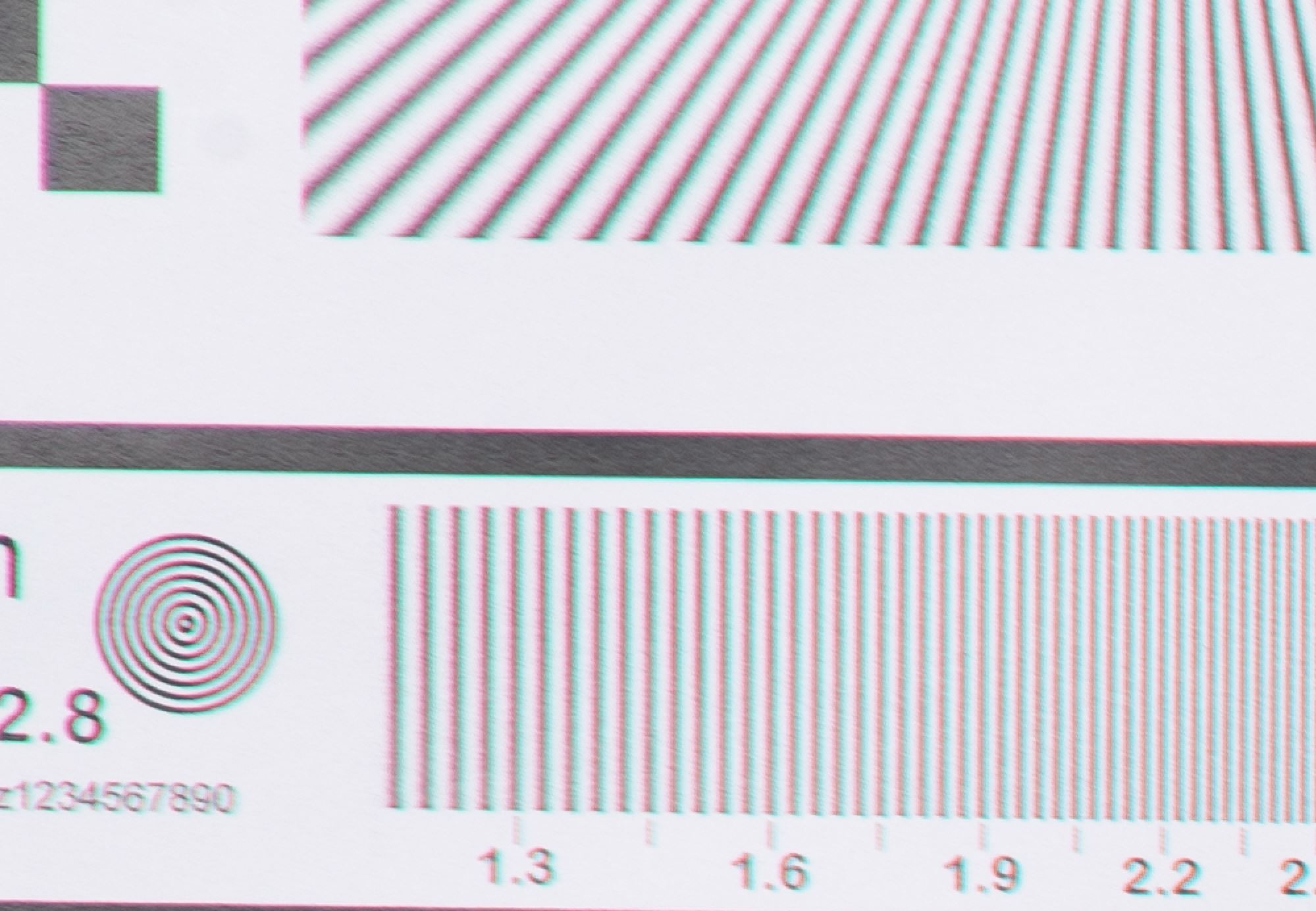
Distortion Test
Here is a lens distortion chart. This is a 2′ by 3′ dry-erase vinyl mat with a 1 inch grid printed on designed for playing D&D or other role playing games. You can get something like this Amazon for about $25. The red lines were added in using photoshop and show what a true straight line would be. There appears to a tiny bit of pin-cushion distortion, but it’s only about the width of the line.
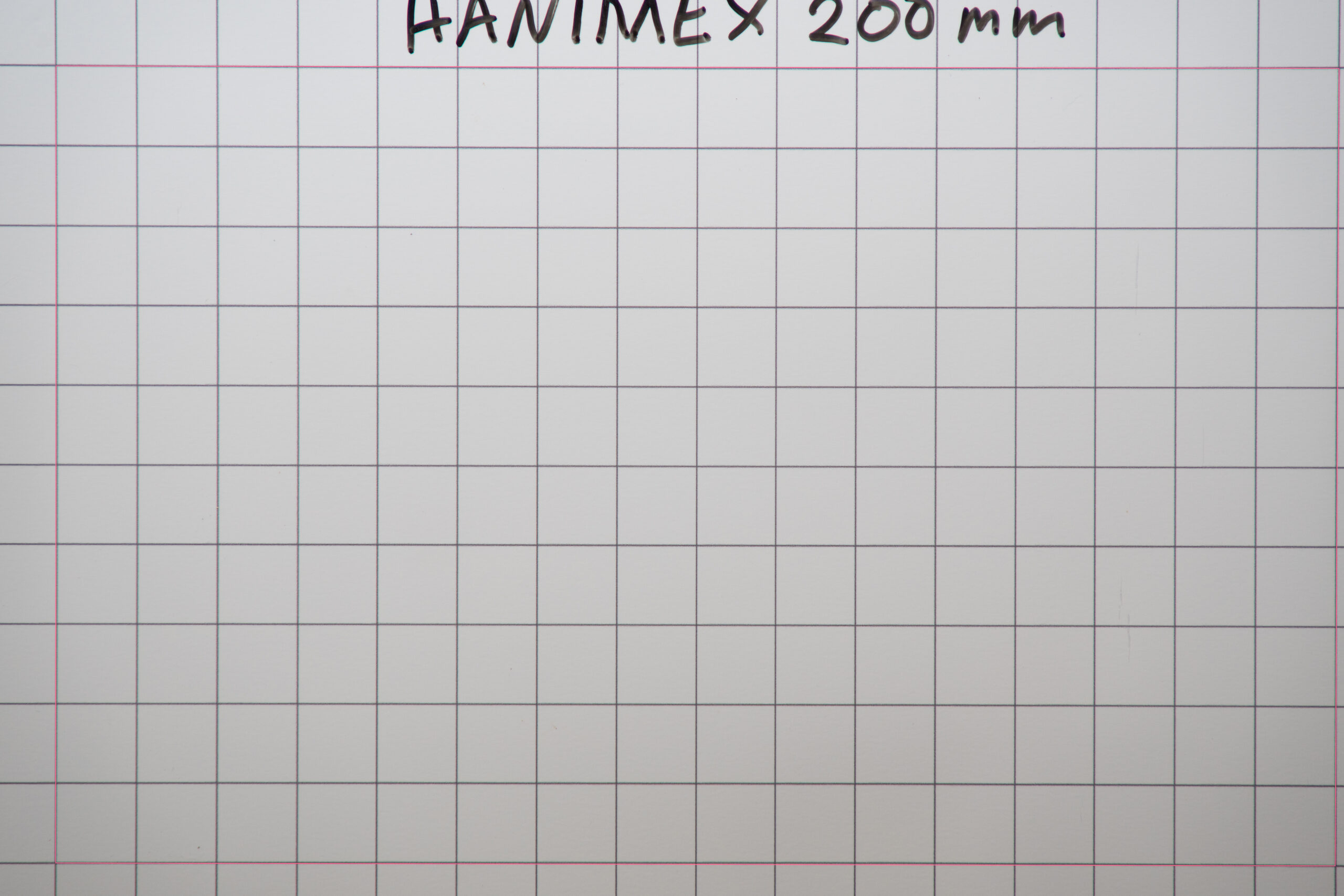
Sample Images
Here’s a gallery of a few sample images that I took at a nearby garden
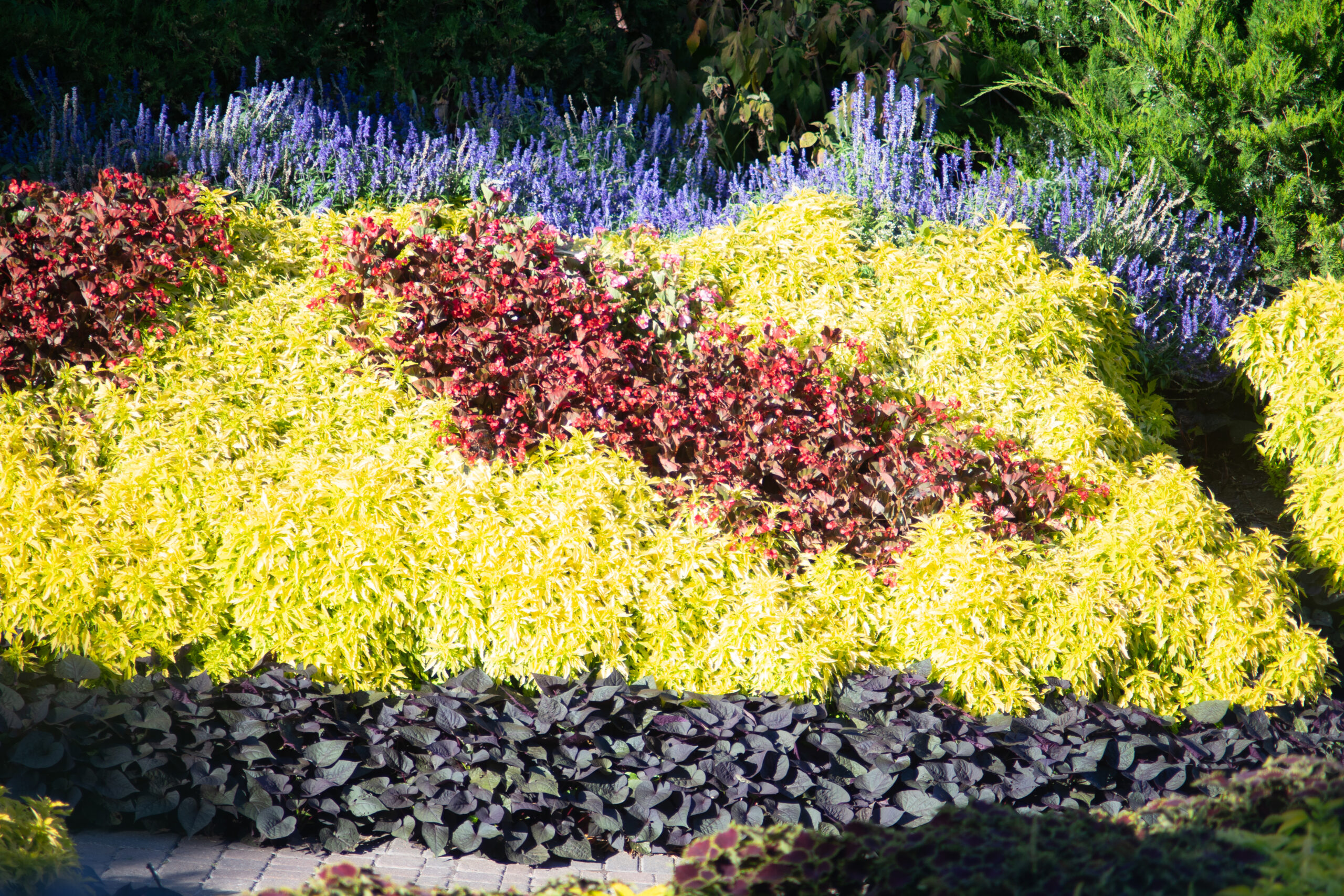
Captured at f3.5 
Captured at f3.5 
Captured at f5.6 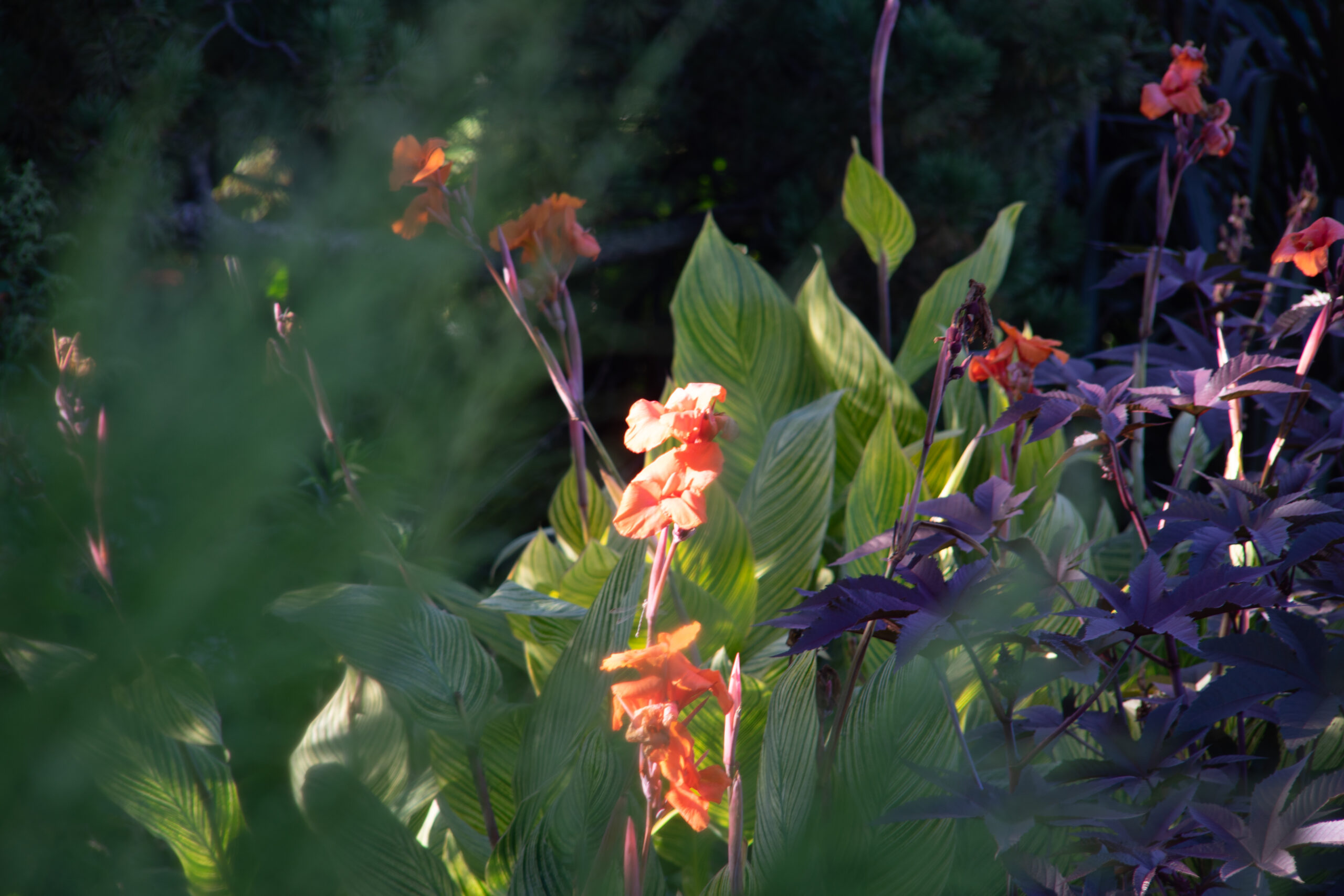
Captured at f8 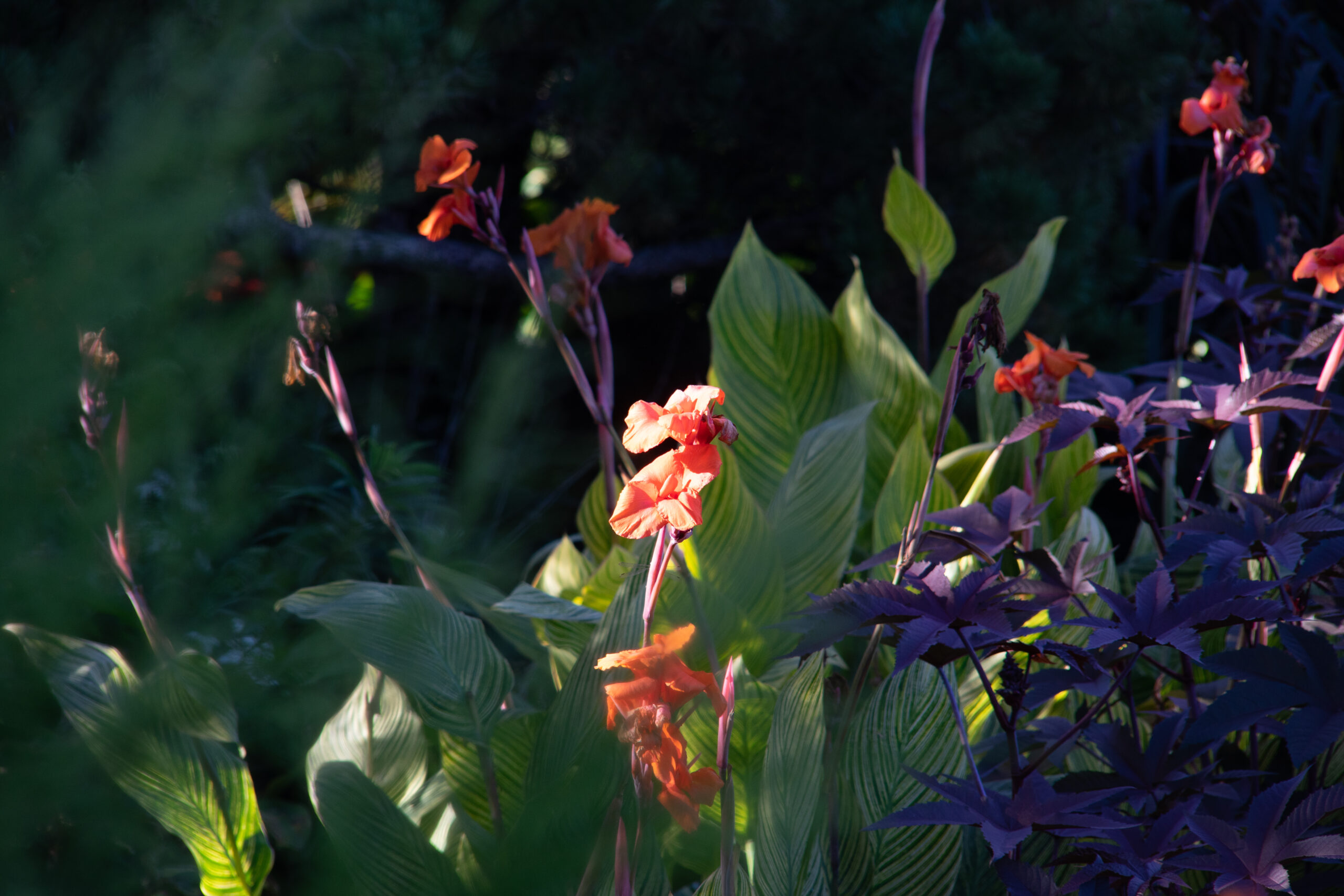
Captured at f16

